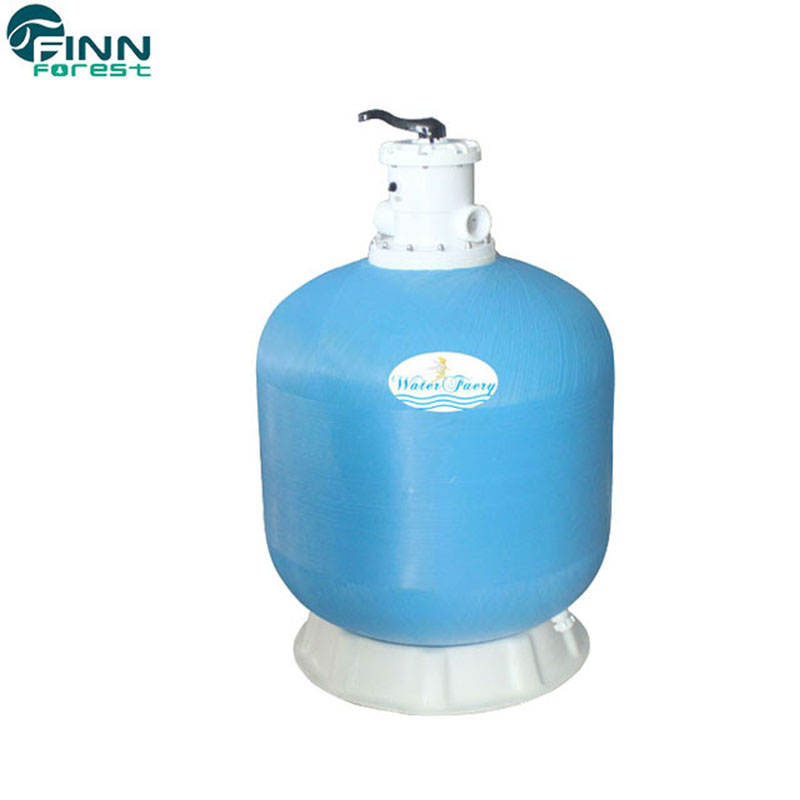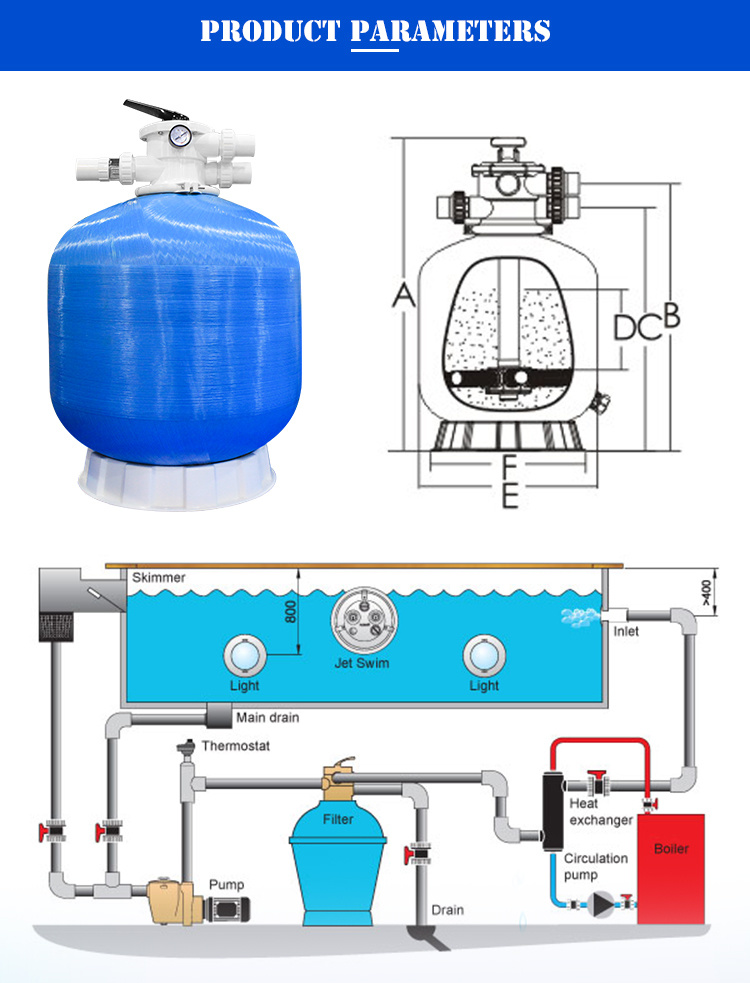
With the advent of summer, the swimming pool has entered the peak season, so the normal use of a swimming pool is inseparable from the maintenance and use of swimming pool equipment. Today we will introduce the use and maintenance of the swimming pool filter sand tank.
The filter sand tank is the earliest and most widely used in the advanced treatment of clean water and sewage in the field of environmental protection. The filter sand tank uses quartz sand as the filter medium. The filter material has high strength, long life, large amount of treated water, and stable and reliable effluent quality. Notable features. The function of quartz sand is mainly to remove suspended solids, colloids, sediment and rust in water. The principle is to use the water pump to pressurize the pollutants that have been flocculated in the water through the interception and adsorption of the filter material to achieve the purpose of water purification.

Product features of quartz sand filter sand cylinder: simple structure, convenient operation and maintenance, automatic operation control, high filtration efficiency, low resistance, large processing flow, and less recoil times. It is widely used in deep filtration of swimming pool circulating water treatment system.
The quartz sand in the sand tank of the swimming pool is best replaced every 1-2 years for the following reasons:
(1) During backwashing, the filter layer will expand upward by 1.2 to 1.3 times its volume, and the upward water flow will drive the filter layer to flow up and down, causing the filter material particles to collide with each other. Because the material is the same, the hardness is the same, and therefore, the filter material has Part of it will be broken into fine particles and lost with backwash water;
(2) Due to insufficient purity of some quartz sand, there will be welding phenomenon when the acid-base changes;
(3) After long-term use, the interior of the filter layer will be partially surrounded by colloid due to uneven distribution of water flow, and lose its effect;
Therefore, the longer the time, the worse the filtering effect of the sand tank. Since the backwash will consume and take away some sand, we need to replace the sand in the sand tank within the specified period.

Steps for changing the sand in the swimming pool filter sand tank:
1. Open the filter sand tank, clean up the original sand and dirt, and select the sand whose shape is a regular hexahedron with eight corners;
2. Stacking of quartz sand: There will be gaps between the corners and corners of each quartz sand in the stacking of quartz sand in the sand tank. These gaps allow water to pass through smoothly and impurities larger than the gap cannot pass through, so that play a role in purification. The size of the gap determines the filtration accuracy of the sand tank. When the gap is small, the filtration accuracy is higher, but if the gap is too small, the water output of the entire sand layer will be reduced, thereby affecting the water output of the sand tank;
Therefore, the gap between the quartz sand determines the filtering effect, and the size of the quartz sand and the integrity of the quartz sand directly determine the size of the quartz sand gap. Therefore, it can also be known that this is an important factor for sand tank filtration.
3. After the sand is paved, install the filter sand cylinder and pay attention to check the tightness.
Precautions for changing sand in swimming pool filter sand tank:
1. Before changing the sand, use waterproof materials (such as plastic, etc.) to completely cover the electrical components near the sand tank to prevent burning out.
2. When filling sand, the center pipe should be sealed with raw material tape to prevent sand from entering the center pipe.
3. When cleaning the sand, be sure to wash it first and then backwash it. Pay attention to the pressure gauge when backwashing. If the pressure exceeds 3kg during backwashing, switch to the front washing immediately.
4. The filling volume of sand should not exceed 70% of the total volume, so as to have space for backwashing.


















